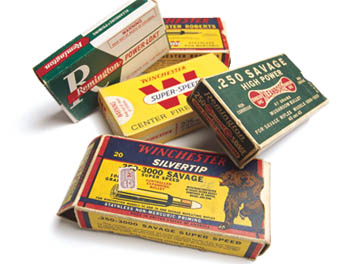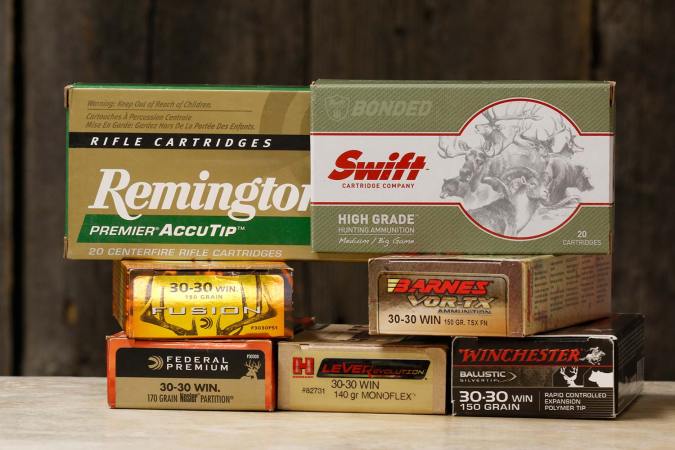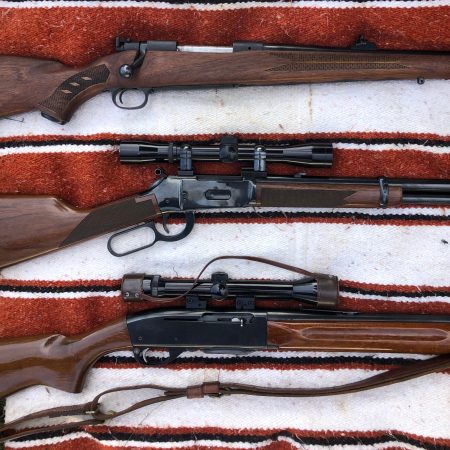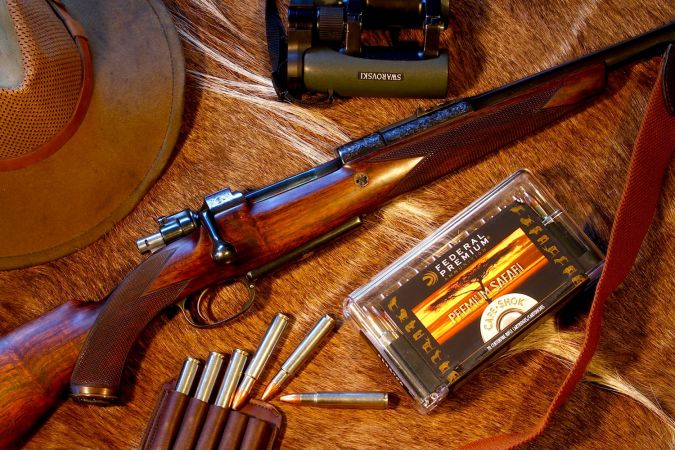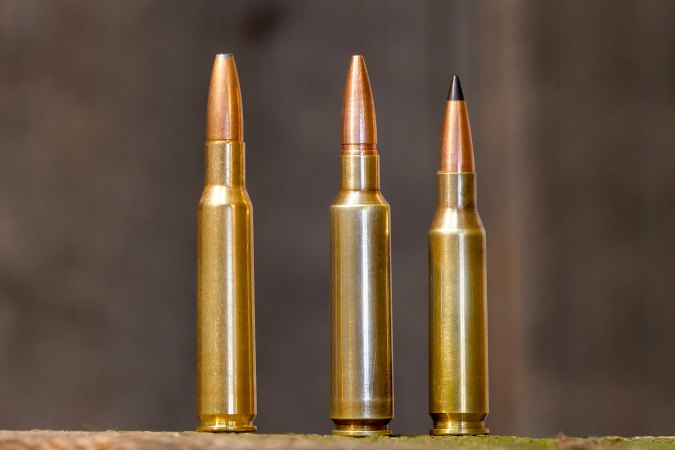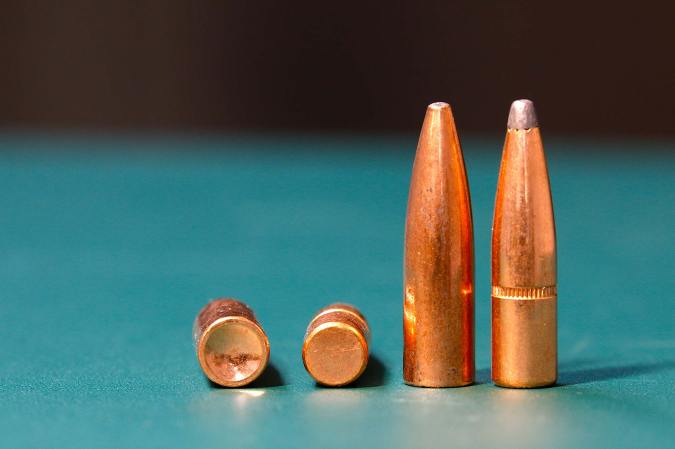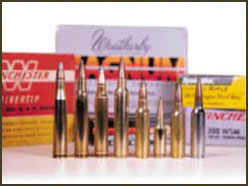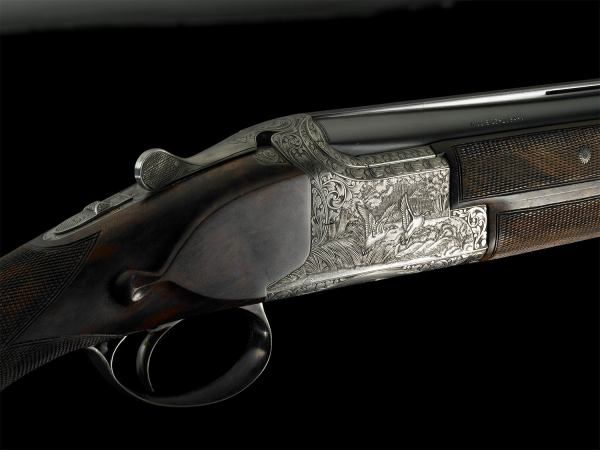We may earn revenue from the products available on this page and participate in affiliate programs. Learn More ›
One of my favorite calibers is one you might not have heard of-the .225 Winchester. It’s fast, it’s accurate and it does the job it was designed to do to near perfection. It’s also one of the most colossal failures in modern cartridge making.
Explaining why some calibers fail while others succeed is a lot like trying to explain why some marriages go sour while others blossom. They all start out with the promise of enduring bliss, but sooner or later-much sooner in the case of the .225 Win.-some of them meet their demise.
Of course, most calibers that we consider obsolete simply died of old age. The real puzzlers are the modern-day hotshots that seemed bound for success only to stumble at the starting gate.
The easiest one to pick on is the aforementioned .225 Win. In almost every aspect of its design and presentation the folks at Winchester demonstrated a death wish unprecedented in cartridge marketing. Which is all the sadder because I, for one, believe their hearts were in the right place, even though everything else about the misbegotten .225 was in the wrong place-especially the rifle. To be charitable, it might be that they were still wistful about their rimmed .219 Zipper (another failure), or simply saw success in a round similar to the .219 Wasp, a rimmed wildcat popular at the time.
Since its introduction in 1936, Winchester’s bolt-action Model 70 rifle had been a darling of hunters and richly deserved its motto, “the rifleman’s rifle.” But by the early 1960s things were not going well at Winchester. Newly arrived MBA-type managers were focusing on ways to reduce production costs, and their hard glare fell on the M70 and other costly models like the M12 shotgun.
Beginning in the 1950s the making of M70s had been slightly economized by replacing metal buttplates with plastic ones while using plainer wood and less checkering. But such cuts didn’t go far enough to suit the bean counters, and in 1964 a whole new M70 was introduced…to the horror of riflemen.
The .225 Debacle
The story of the “new” M70 is well known, along with how the phrase “Pre-64” entered our lexicon, so I won’t tell it again. Except to point out that the .225 chambering made its grand entrance at the time of Winchester’s 1964 debacle. Some night when we’re sitting around a campfire we might modestly amuse ourselves by speculating on whether the .225 might have been salvaged had it been a truly spectacular cartridge. But the facts are that it wasn’t, and that it was born with a couple of strikes already against it. For one thing-now tell me if this makes sense-Winchester was abandoning a varmint cartridge better than the .225: the .220 Swift.
[pagebreak] True, there had been problems with the Swift (along with years of bad publicity from writers who had probably never shot it)-enough to cause Winchester’s executives to vow they’d never make another one. (They would recant that vow a few years later.) One problem with the Swift, though minor, was a rim that extended somewhat beyond the body of the case.
Rimmed or even semi-rimmed cartridges are at odds with many bolt-action rifles-the M70 included-and cause occasional feeding problems.
It seems clear enough that when you design a new cartridge it makes sense to eliminate problems, such as rims, that existed before. But did Winchester? Take a guess.
To be fair, however, I have to say that I’ve owned two of those beastly looking 1964 rifles in .225 caliber, and with factory ammo they were, until recently, the most accurate factory rifle/ammo combos I’ve ever shot. With so many things going against it, the .225 was a cartridge that needed to be put out of its misery, and the coup de grace was administered by Remington’s .22/250. Announced just weeks after the introduction of the .225, the .22/250 had been an immensely popular wildcat (made by necking a .250 Savage se down to .22 caliber, hence its name) and had benefitted from decades of favorable word of mouth and publicity. So while the .225 stumbled at the starting gate, the .22/250 hit the ground running, aided all the more by Remington’s popular M700 and other brands that were quick to add it to their catalogs.
Where Are They Now?
It’s easy to play coroner and declare the cause of the .225’s death. But with other cartridges that suffered a similar fate, the causes tend to be more subtle.
Remember the .307 and .356 Winchester rounds? When they appeared on the scene back in the early 1980s, the stars were aligned in their favor. Or so it seemed, because the cartridges and rifles for which they were chambered represented two popular worlds. The .308 Win. cartridge was riding a crest of popularity about then and the .358 Win. had earned a solid reputation as good medicine in brush country. So wouldn’t they be great if combined with the light, fast-handling, lever-action carbines so beloved by American hunters?
As a matter of fact, Savage had done exactly that several years earlier with its M99 lever rifle, but by 1980 had sidelined M99 production. At any rate, the M99 had never possessed the cowboy/hunter cachet of Winchester’s still-popular M94 carbine, so a .308/ .358-M94 union seemed to be a marriage made in ballistic heaven. But first there were a few problems to be solved.
[pagebreak] The .308 and .358 were modern, high-intensity rounds that developed more internal pressure than the old M94 was designed to withstand. Winchester countered this problem with a bulked-up M94 called the XTR that also featured a redesigned ejector, which tossed fired cases out at an angle so they wouldn’t bang against top-mounted scopes as happened with the older top-ejection M94’s.
These improvements were well and good and would have been a fine place to stop, but since the folks at Winchester were in a redesigning mood they also added a bulky Monte Carlo stock that looked as out of place on the 94 as a tango dancer at a hoedown.
Along the way, the ammo-developing arm of Winchester figured that rimmed versions of the .308 and .358 would go well with the revamped 94 and came out with the .307 and .356 Win. rounds. Except for the rims, dimensions are virtually identical to their progenitors. Ballistics of the rimmed versions, however, are a bit reduced, especially the downrange figures of the .307, owing to its flat-tipped bullets (a precaution against accidental ignitions that might occur when pointed bullets are loaded in tubular magazines).
Inevitably, the .307 and .356 were compared to the .308 and .358 and came up short. That might have been forgiven if the rifle had more appeal, but it too suffered when compared to M94s of generations past. So after struggling with the cartridges for about 15 years, Winchester threw in the towel. Nowadays Winchester ammo has reduced its loadings to one each for the .307 (180-grain) and .356 (200-grain) and, according to the Blue Book of Gun Values, rifles in these calibers have a collectors’ value of some 25 percent above that of M94s of that generation, indicating that very few were sold.
Remington’s Big 8
One cartridge that I think deserved a lot more popularity is the 8mm Remington Magnum. But it’s pretty obvious why it didn’t succeed when you compare its numbers with those of its two main competitors, Winchester’s .300 and .338 magnums.
Shortly after Remington gave the word in 1978 that the 8mm Mag. would be available in its M700 bolt rifle, I took one on a few hunts. I pulled off some satisfying long shots at elk and moose with 220-grain bullets factory-loaded to a reported 2,830 feet per second. But whereas the 8mm Mag. case was as long as the full-length .375 H&H;, and thus required a magnum-length action and corresponding longer bolt travel, the .300 and .338 Winchesters offered quite similar ballistics in standard-length (.30/06) cases and rifles.
Today Remington loads only a 200-grain bullet at 3,000 fps, compared to a current 200-grain Super-X .338 Win. Mag. bullet at 2,960 fps. So despite the 8mm Mag.’s larger case capacity, it didn’t offer enough of a performance advantage to make it a winner. But now the plot thickens with Winchester having just introduced an 8mm Mag. of its own: the .325 WSM. This puts it head to head with the .338 in a virtually dead-even ballistic race. Stay tuned.
A couple more calibers that were hobbled at the starting gate were the 6.5 Rem. Mag. and .284 Winchester. The essence of a slender 6.5 bullet in a Magnum case is velocity, a flat trajectory and the appeal of long-range shooting. Remington, however, was thinking in terms of short-range timber hunting and offered its 6.5 Mag. in the stubby little M600 carbine. I wish I had one because these rifles are now rare and valuable collectors’ items.
[pagebreak] Winchester’s .284
Although the .284 Winchester could have achieved greatness (yes, it’s that good), it has instead been a perennial bridesmaid. Winchester’s concept was a good one-packing performance nearing that of the .270 Win. and .280 Rem. into a case scarcely longer than the .308 Win. To achieve such a wonder it designed from scratch a case somewhat fatter than the .308, with more powder capacity.
If this short-but-potent round had been united with light, short-action bolt rifles, it might very well have made firearms history. Instead it was offered in Winchester’s nicely built but not all that accurate M88 lever and M100 autoloading rifles. When the rifles disappeared, the .284 did too, but not before a host of wildcatters discovered that the plump case was great for converting into such popular wildcats as the 6mm/284 and 6.5/284. For some good cartridges that deserve better, there is life after death.
Food for Thought
At the beginning of this piece I mentioned that the tragic .225 Winchester is one of my favorites. But why? Rimmed cartridges such as the .225 belong in single-shot, falling-block-type rifles. So recently when I had master craftsman Pete Grisel build a rifle on a beautiful little Miller single-shot action, the .225 was a logical caliber. Which makes it interesting to speculate: Could the .225 have survived and possibly even flourished if it had been offered in a popular single-shot rifle such as the Ruger Number One? But oh, how often we all overlook the obvious.
<< Just Jim
Marvelous Creations
Recently I happened across a TV program that had a panel of assorted know-it-alls discussing mankind’s greatest achievements.
I went along with their ranking the ancient Roman aqueducts with the great bridges of today, and had no quarrel with tnchesters offered quite similar ballistics in standard-length (.30/06) cases and rifles.
Today Remington loads only a 200-grain bullet at 3,000 fps, compared to a current 200-grain Super-X .338 Win. Mag. bullet at 2,960 fps. So despite the 8mm Mag.’s larger case capacity, it didn’t offer enough of a performance advantage to make it a winner. But now the plot thickens with Winchester having just introduced an 8mm Mag. of its own: the .325 WSM. This puts it head to head with the .338 in a virtually dead-even ballistic race. Stay tuned.
A couple more calibers that were hobbled at the starting gate were the 6.5 Rem. Mag. and .284 Winchester. The essence of a slender 6.5 bullet in a Magnum case is velocity, a flat trajectory and the appeal of long-range shooting. Remington, however, was thinking in terms of short-range timber hunting and offered its 6.5 Mag. in the stubby little M600 carbine. I wish I had one because these rifles are now rare and valuable collectors’ items.
[pagebreak] Winchester’s .284
Although the .284 Winchester could have achieved greatness (yes, it’s that good), it has instead been a perennial bridesmaid. Winchester’s concept was a good one-packing performance nearing that of the .270 Win. and .280 Rem. into a case scarcely longer than the .308 Win. To achieve such a wonder it designed from scratch a case somewhat fatter than the .308, with more powder capacity.
If this short-but-potent round had been united with light, short-action bolt rifles, it might very well have made firearms history. Instead it was offered in Winchester’s nicely built but not all that accurate M88 lever and M100 autoloading rifles. When the rifles disappeared, the .284 did too, but not before a host of wildcatters discovered that the plump case was great for converting into such popular wildcats as the 6mm/284 and 6.5/284. For some good cartridges that deserve better, there is life after death.
Food for Thought
At the beginning of this piece I mentioned that the tragic .225 Winchester is one of my favorites. But why? Rimmed cartridges such as the .225 belong in single-shot, falling-block-type rifles. So recently when I had master craftsman Pete Grisel build a rifle on a beautiful little Miller single-shot action, the .225 was a logical caliber. Which makes it interesting to speculate: Could the .225 have survived and possibly even flourished if it had been offered in a popular single-shot rifle such as the Ruger Number One? But oh, how often we all overlook the obvious.
<< Just Jim
Marvelous Creations
Recently I happened across a TV program that had a panel of assorted know-it-alls discussing mankind’s greatest achievements.
I went along with their ranking the ancient Roman aqueducts with the great bridges of today, and had no quarrel with t
